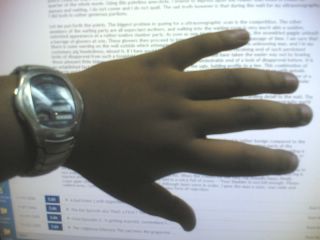A Bengali Man's Guide to a Punjabi Wedding
My good friend D. just got married. Heres wishing the brand new couple all the cookies, biscuits and munchies. The news is that I was fortunate enough to have been able to occupy the much venerated position of awkwardly-dressed-gawking-friend at the ceremony. Also, despite my frugal social skills, I did manage to have a whale of a time. All in all, just the thing what the doctor would order.Reading of my favourable review of the whole racket, my markedly scant readership must be wishing to be a part of a similar cermony so as to make themselves available for the above mentioned whale of a time. I however feel compelled to warn one and all that it is not all that rosy and pink. The punjabi marriage is one fraught with nuances and if one does not keep one's eye's skinned for them, they tend to hit one's face with the intensity of a voluminous, cold, dead fish bunged by an extremist vegetarian. I have therefore garnered a few salient points which will keep the hapless, boring bengali like me in good stead and well prepared for the exigencies that inevitably ensue during the punjabi marriage.
It is Fun : Punjabi weddings are just like the bengali weddings in most ways. It is full of the normal stuff -- the bewildered bridegroom, the coy bride, incoherent sanskrit mantras, the general confusion and the bad clothes. There however exists a profound difference -- the punjabi wedding, in sharp contradistinction to the bengali wedding, is rip-roaring fun. The individual habituated to the bland bengali wedding is warned in advance -- Please do not expect the moribund, machiavellean mukherjii marriage. Be prepared to have some serious fun and one is urged not to feel too guilty or alarmed about it.Dancing : There will be dancing -- and certainly not in dollops. There will be dancing in large, generous, kingsize portions. Dancing, for me always has been that activity which involves the vigorous shaking of the head to some obscenely loud Deep Purple number. The head may also be repeatedly banged against an object whose hardness is determined by the degree of inebriation. The variety of dancing in question however, is a totally different glass of lassi. The bhangra is more of a rhythmic flailing of hands and knees to some extremely similar sounding songs. Rhythmic movement on my part however has always been an impossible task. Like left-legged souls are therefore warned to steer clear from these immense dancing arenas lest they be dragged in by some extremely enthusiastic individual and subjected to the ignominy of awkwardly jerking one's legs amidst a collection of smooth, silk-shirted bhangra experts. The next logical question that would naturally spring to the mind of the astute two-left-legged individual would be "Where are these immense dancing arenas ?" So, here is the helpful answer: Be very wary of the carpeted areas. Also, if there is a part of the floor which has multicoloured rectangles which abruptly illuminate themselves at regular intervals, that is the part of the planet which is to be treated with extreme caution. The larger problem however is that the action is not confined to these areas themselves. They are just epicentres. It spreads. Therefore, simply zeroing in on one stationary location is utter foolhardiness. Any standard text book on bhangra avoidance would always suggest one to be dynamic, observant and agile. One is urged to keep a very close eye on the mass movement of the dancers and frequently shift base, pretending to have something rather important to execute at any spot where no dancers are present. Language Tip: For some reason, the bhangra is not danced (nachna) it is poured (dalna). Do not say "Woh bhangra nach raha hai !" (He is dancing the bhangra). Always say "Woh bhangra dal raha hai !" (He is pouring the bhangra). If you are in a position where you are about to say "Mein bhangra nach raha hu." ( I am dancing the bhangra ) and you are as talented as I am in the bhangra department, you might as well go and say it, since you have already embarrassed yourself.
The Horse: Somewhere during the proceedings, a white horse shall make an appearance. Even though one will have been crazed by the surfeit of vegetarian food, one is very very strongly urged not to rub one's hands in glee at the hope of some meat on the table. The horse is not for eating. The poor animal, dressed like Kareena Kapoor will be the beast of burden which shall carry the bridegroom into the land where leaving a wet towel on the bed is punishable by death and drinking binges and good food do not exist. To add insult to injury, all and sundry shall cruelly mock the poor bloke by gleefully dancing ( See above ) in front of the very horse while the victim haplessly observes from atop it. I too in my sadistic nature, threw caution to the wind and showcased a few of my personal steps for the benefit of my friend, but was hastily stopped from displaying any more since I was scaring the poor horse. In review, one is advised not to scare, or eat the horse.
Language Tip: The horse in question is a mare and not a stallion. So do not say "Ghoda aa raha hai" ( The stallion is coming ). Instead, say "Ghodi aa rahi hai" ( The mare is coming ). For some strange unexplained reason, "Ghodi aa raha hai" is also not very well received.
Tags: culture, bengali, punjabi, weddings, bhangra


4 comments:
how can i miss this sweet post on my ex. roomies shaadi? This was neat..hahaha
Hmm....what do they say about geniuses not being appreciated in their time?
Rip-roaring
hey bashu bhai,
it wasnt even that bad!!!!
About time you posted no?
Post a Comment